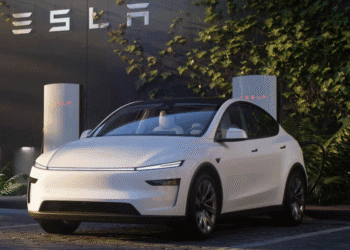DBT Bureau
Pune, 6 Sep 2025
The Indian government has announced a significant revision in the Goods and Services Tax (GST) structure, reducing rates to provide relief to the automotive sector amid various challenges. Effective from September 22, 2025, the GST rate for small cars (petrol/CNG/LPG engines up to 1,200cc or diesel engines up to 1,500cc, and less than 4 meters in length) and motorcycles up to 350cc has been slashed from 28% to 18%, a reduction of 10 percentage points. Larger vehicles, including SUVs and luxury cars, will now fall under a new 40% GST slab, down from a previous range of 43% to 50% (including compensation cess of 1% to 22%), offering a tax reduction of up to 10 percentage points. Electric vehicles (EVs) and hydrogen fuel cell vehicles continue to benefit from a 5% GST rate, unchanged to promote sustainable mobility.
Industry experts believe this GST cut will stimulate consumer demand across both passenger and commercial vehicle segments. Affordability, a key barrier especially for EVs, is expected to improve, encouraging faster adoption of EVs and hybrids. The policy also aims to position India as a competitive global automotive manufacturing hub.
Shailesh Saraph, EVP and Global Head – ER&D Delivery at Tata Technologies, stated: “The move to reduce GST for the automotive sector would help in boosting consumer demand, make mobility more accessible, and strengthen India’s position as a global automotive hub. This comes at a crucial time when the industry is rapidly transitioning to electric and sustainable mobility, which will also encourage greater investments in innovation and capacity building. For the sector, this is an opportunity to strengthen partnerships with Original Equipment Manufacturers (OEMs) and suppliers, delivering advanced engineering and digital solutions to drive growth and transformation in the sector.”
The GST reduction is expected to benefit the entire automotive value chain, including manufacturers, component suppliers, and consumers. For instance, a small car like the Renault Kiger, with a base price of ₹7 lakh, previously incurred ₹1.96 lakh in GST at 28%; now, at 18%, the tax drops to ₹1.26 lakh, saving buyers approximately ₹70,000. Similarly, compact SUVs like the Tata Nexon and Hyundai Venue, and two-wheelers under 350cc, are projected to see price reductions of 7.8% to 8.5%. However, motorcycles above 350cc will face a higher 40% GST, up from 31%, potentially increasing prices by 6.9%.
Experts highlight that sustained policy support, including investments in charging infrastructure and technology, will be crucial to maximize the impact of these GST reforms. The removal of the compensation cess, previously ranging from 1% to 22%, further simplifies the tax structure and reduces costs, particularly for commercial vehicles and fleet operators. This move, timed ahead of the festive season starting with Navratri, is expected to boost sales and drive economic growth in the automotive sector.





















